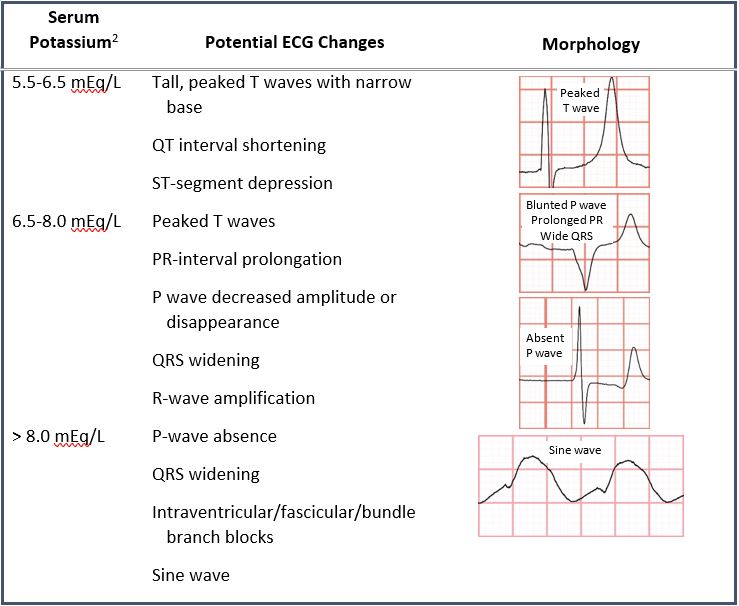Published on
With this condition, what three ECG features predict adverse outcomes and what is the expected progression of ECG changes?
This is a case of hyperkalemia as evidenced by the absence of P waves (ie, junctional bradycardia) and peaked T waves. The three ECG features that predict adverse outcomes are:
- Bradycardia <50 bpm
- QRS >110 ms
- Junctional rhythm
Notice that peaked T waves were not found to predict acute adverse outcomes.1 Table 1 details the expected progression of ECG changes.

What Is the Treatment?
Membrane stabilizers include calcium and hypertonic saline. Intracellular potassium shifters include insulin/glucose, beta-agonists, and sodium bicarbonate in acidotic patients. Potassium eliminators include loop diuretics and kayexalate. New medications to promote gastrointestinal excretion hold promise (patiromer and sodium zirconium cyclosilicate).2
See the video provided by ECG Stampede for detailed analysis.
Pearls for Urgent Care Management
- Electrocardiographic features of hyperkalemia that portend short-term adverse outcomes include bradycardia <50 bpm, QRS >110 ms, and a junctional rhythm.
- Intravenous calcium should be given, if feasible, to anyone with electrocardiographic features that portend adverse outcomes.
- All patients with electrocardiographic changes of hyperkalemia should be transferred to a higher level of care.
REFERENCES
- Durfey N, Lehnhof B, Bergeson A, et al. Severe hyperkalemia: can the electrocardiogram risk stratify for short-term adverse events? West J Emerg Med. 2017;18(5):963-971.
- Long B, Warix JR, Koyfman A. Controversies in management of hyperkalemia. J Emerg Med. 2018;55(2):192-205.
A 50-Year-Old Male Presents with Right Foot Pain
1 2
